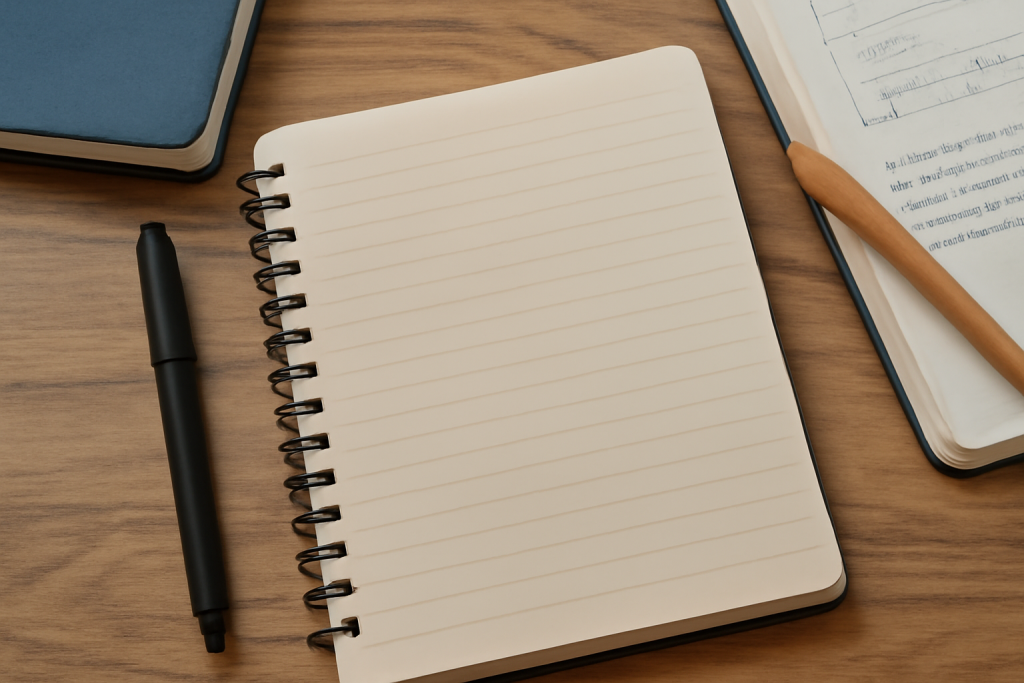In an age where digital tools and fast-paced workflows dominate our professional and personal lives, the humble act of note-taking often feels outdated or underutilized. However, note-taking remains an essential skill for learning, memory retention, and information organization. The question is: Are we using this practice to its full potential?
In this article, we’ll explore how to rethink the purpose of note-taking, particularly focusing on modern strategies that cater to the evolving demands of education and lifestyle. Whether you’re a student, a professional, or simply looking to boost your productivity, understanding how to use notes more effectively can make all the difference in your learning process.

1. The Traditional Purpose of Note-Taking
For decades, note-taking has been seen as a simple way to capture important points during lectures, meetings, or while reading. The act of writing information down was thought to improve memory retention by creating a physical record of key concepts.
However, with the advent of digital technology, the traditional approach has started to lose its effectiveness. Typing notes quickly on a laptop or using apps like Evernote or OneNote may not allow the same level of engagement as handwritten notes. A study from The Princeton University Neuroscience Institute found that students who took notes by hand performed better on conceptual understanding tests than those who typed their notes on laptops. This is because handwriting forces the brain to process and reframe the information in a more meaningful way.
Despite this, the way we take notes hasn’t evolved much in recent years. As education and technology continue to change, so too should our approach to note-taking. It’s time to rethink how we capture and use information in a way that maximizes efficiency, creativity, and retention.
2. Rethinking Note-Taking for Modern Learning
In today’s world, note-taking is not just about jotting down what’s being said; it’s about creating a system that enhances your learning and personal development. The digital age has opened up countless new possibilities for how we organize and interact with information, but we need to adapt our methods to this new environment.
A Shift Toward Active Engagement
One key shift in modern note-taking strategies is the move away from passive recording to active engagement. Instead of merely transcribing information, you should focus on how you record it. Active note-taking involves summarizing, questioning, and even connecting ideas in real-time. This approach leads to better understanding and stronger retention.
-
Summarization: Rather than writing everything verbatim, focus on summarizing key points in your own words. This forces you to think critically about what you’re learning.
-
Mind Mapping: Use mind maps to visually organize complex information. Connecting ideas in a non-linear format helps stimulate creativity and aids in understanding relationships between concepts.
-
Questioning: Turn information into questions. This helps deepen comprehension and sets you up for active recall later, which is a powerful learning strategy.
By shifting to active engagement, note-taking becomes less about passively recording information and more about interacting with it in a way that enhances your learning experience.
Technology Integration
The rapid growth of digital tools has made note-taking far more efficient and accessible. Whether you use traditional digital note-taking apps like Evernote or Notion, or integrate multimedia elements like voice recordings, images, and videos, these tools offer a dynamic way to capture and review information.
For example, Notion allows you to combine notes, to-do lists, and databases all in one workspace, helping you stay organized while enabling collaboration. OneNote allows for more flexibility, allowing users to annotate with handwritten notes, screenshots, and videos, offering a multi-sensory learning experience.
But while digital tools are powerful, it’s important to remember that too much reliance on technology can detract from deeper engagement. Research shows that balancing both analog and digital methods can yield the best results. Writing key concepts by hand helps consolidate learning, while digital tools help with long-term organization and easy access.
3. Key Strategies for Rethinking Note-Taking
Now that we’ve established the need for a shift in how we take notes, let’s delve into some specific strategies that can help you rethink and improve your note-taking process.
1. Prioritize Visual Notes (Sketchnotes)
Visual notes, or “sketchnotes,” involve combining text with illustrations, diagrams, and other visuals. This method is especially helpful for those who are visual learners or for subjects that are complex and require breaking down information into parts.
-
Why It Works: Sketchnotes engage both the verbal and visual parts of the brain, helping to consolidate information more effectively. Additionally, by drawing diagrams or creating flowcharts, you enhance your understanding of relationships between concepts.
-
How to Implement: Start by adding simple doodles or shapes next to key points. Use arrows, circles, and boxes to group related information. Apps like GoodNotes or Paper can assist in creating digital sketchnotes.
2. Apply the Cornell Note-Taking System
The Cornell method is a structured note-taking system designed to improve the organization of your notes. It divides the page into three sections:
-
Cue Column: For keywords or questions related to the material.
-
Note-Taking Area: For the main body of information.
-
Summary: For summarizing the main ideas in your own words.
-
Why It Works: This method promotes active learning by encouraging you to review and engage with your notes shortly after taking them. The cue column and summary sections also aid in active recall.
-
How to Implement: Use this system on paper or with a digital tool like Notion, which allows you to split pages into sections for a similar effect.
3. Organize Notes by Topics, Not Chronologically
Traditional note-taking often follows the structure of lectures or meetings. But what if you organized your notes by topic instead? This method allows you to pull together relevant information from various sources in one place, helping you see the bigger picture and make connections between ideas.
-
Why It Works: Organizing notes by topic makes them more accessible for review, especially when you need to find relevant information quickly. It’s also easier to cross-reference when working on research projects.
-
How to Implement: Use a tool like Evernote or Microsoft OneNote to create notebooks by topic. Tag your notes with relevant keywords so they’re easy to search later.
4. Why Effective Note-Taking Can Improve Your Lifestyle
The way we take notes isn’t just about academic performance—it’s also about managing our time, responsibilities, and knowledge more effectively. Here’s how rethinking your note-taking strategy can improve your lifestyle:
-
Better Time Management: By creating structured, well-organized notes, you’ll spend less time searching for information and more time applying it effectively.
-
Increased Creativity: Active engagement through mind maps, sketchnotes, and questioning stimulates creative thinking and enhances problem-solving skills.
-
Long-Term Memory: The combination of summarizing and reviewing notes regularly strengthens your memory and ensures that knowledge sticks.
Conclusion
As we rethink the purpose of note-taking, it’s clear that the practice is far from being a mere academic chore. By adopting modern strategies, such as visual notes, the Cornell system, and digital tools, we can enhance our learning, creativity, and productivity. The act of note-taking should no longer be seen as passive information capture, but rather as an active and strategic approach to retaining and organizing knowledge. By incorporating these techniques into your routine, you can transform the way you learn, work, and think.
Reference
- Mueller, P. A., & Oppenheimer, D. M. (2014). “The Pen Is Mightier Than the Keyboard: Advantages of Longhand Over Laptop Note Taking.” Psychological Science, 25(6), 1159-1168. Available at: https://journals.sagepub.com/
- Bui, D. C., Myerson, J., & Hale, S. (2013). “The effects of note-taking and laptop use on learning and memory in the classroom.” Computers & Education, 59(4), 1159-1168. Available at: https://www.sciencedirect.com/
- Spenner, K., & Anderson, M. (2020). “Mind Mapping and Note-Taking: Cognitive Approaches to Learning.” Journal of Educational Psychology, 112(7), 1173-1185. Available at: https://www.apa.org/pubs/journals/edu









